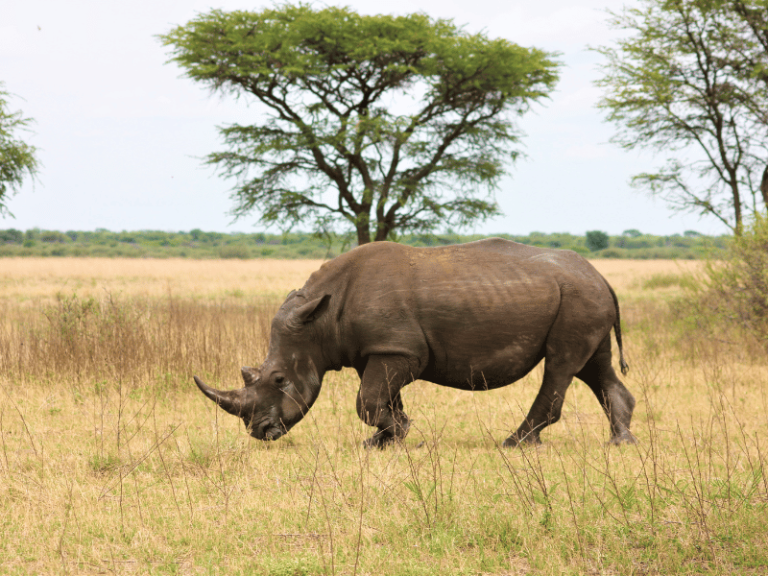In the grassy forests and marshy areas of Africa and Southeast Asia, there lives a massive beast. Standing less than 2 meters tall, but weighing over 2 tons, its head is as large as a bucket, its body shaped like a barrel, and its legs are thick as pillars. Compared to it, even cattle appear slender and lively, earning it the title “rhinoceros.”
Despite being clumsy, rhinoceroses command respect with their ferocity, deterring even lions, tigers, and leopards from provoking them, primarily due to their powerful horns.
The horn of a rhinoceros differs significantly from those of cows, sheep, and deer. Firstly, the location of its growth differs. While horns of cattle, sheep, and deer grow symmetrically on the front upper part of their heads, rhinoceros horns grow centrally on the face above the nose. Typically, rhinos have only one horn; when they have two, they are not symmetrical but arranged one above the other.
Moreover, horns of cattle, sheep, and deer are usually symmetrical in size and shape on both sides. In contrast, if a rhinoceros has two horns, the lower one is notably larger while the upper one is smaller. Generally, rhinos have only one horn. What’s even more peculiar is that rhino horns, unlike horns of cows, sheep, and deer, are not directly connected to their skulls but are instead protrusions of keratinized skin, lacking any bony core.
Why are rhino horns so different from horns of other animals? This is not coincidental. Nature does not maintain useless organs for long periods. The materialist perspective of biological organs, “use it and develop it, don’t use it and lose it,” was affirmed long before Darwin by the French biologist Lamarck.
The differences in rhino horns compared to those of other animals reflect a clear adaptation in nature. Horns of cattle, sheep, and deer serve as weapons in intra-species competition for mates. During mating periods, males use their horns to fight for females. As a result of years of natural selection, horns of male animals have become highly developed. Conversely, horns of females have gradually degenerated. Therefore, horns of cattle, sheep, and deer are not weapons for interspecies combat but are the result of intraspecies competition. The antlers of deer, especially during the velvet period, are particularly attractive and serve a dual purpose of enticing females, hence they shed annually.
Rhinoceros horns, however, serve a different purpose. They are not ornamental features used to attract mates, nor are they tools for intra-species combat. They display their formidable power only when threatened by enemies.
Rhinoceros horns can grow very large, with the longest reaching 1.58 meters. They are straight, sharp, resembling a pointed spear. When a rhinoceros is provoked, its favorite move is to exert all its strength, lower its head, and charge forward. This action is too much for even powerful predators to withstand; even a ten-ton elephant would be pierced through its belly. The rhinoceros’s skin is exceptionally tough, akin to ancient soldiers’ specially crafted armor. Despite the sharp claws and teeth of tigers and leopards, penetrating its skin is exceedingly difficult. Therefore, animals in tropical forests dare not confront it. In this light, the lethal horn of the rhinoceros is its sole weapon for interspecies combat. A single horn is more effective than two; a horn growing centrally on the face is more powerful than horns on the sides of the head; and a sharp, straight horn is more lethal than curved or multi-branched horns. Thus, the horn of the rhinoceros is truly unique among its peers.

